Rage, tantrum, meltdown….
These words might just gives you tics or convulsions if you are the parent of a child with special needs, a child with sensory processing disorder, or a child who has experienced trauma or has been through foster care or adoption. You know how easy it is for your child to become overstimulated or dysregulated. When a parent of a neuro-typical child says their child is having a tantrum, you might just watch in disbelief thinking, “THAT is a tantrum?!” as you are recalling the last three hour fit of blood curdling screams that caused you to wonder how many of your neighbors were dialing 911. And as an added bonus to those who are foster parents, you wonder how likely the caseworker will believe that you didn’t touch the child, but merely asked something simple like that shoes be put on to go out in the freezing snow.
Or you may have a child who instead of going into fight mode with a rage, they go into flight and take off running, or freeze and completely shutdown. Each of these behaviors presents challenges because the child does not express emotions that can be discussed and dealt with. There is no problem solving ability because they are operating out of the survival part of their brain where logic and reasoning do not exist and are not understood.
Providing Tools as Coaches
All these kiddos lack the ability to calm, or self-soothe, themselves, and it’s our job as their life coaches to teach them these skills and also to come alongside and calm them until they learn to do it themselves. Kids with any of the aforementioned difficulties need sensory activities to help them calm down. The last few weeks I have been working on creating a calm down area for our kids where they can go when they feel overstimulated, overwhelmed, upset, or any other negative emotion that they feel they cannot control BEFORE going into a fight, flight, or freeze response. These strategies won’t likely work when the kid has gone ape crazy and has started acting out of the primitive part of the brain…you know, when they’re mid-meltdown and could definitely not tell you what 2+3 equals.
As children, we naturally developed ways that we soothed ourselves and calmed down. We can offer different options to our children, and they will eventually figure out what reduces their anxiety, calms them down, helps them focus, and so on and begin using them independently. Engaging the senses in different ways produces calming effects, reducing stress and anxiety and helping the brain and senses organize themselves.
My goal with this project was to provide enough activities that each child could pick between at least a couple different activities for engaging each of their senses and for the different calming actions. I scoured Pinterest and looked through my go-to sensory books (The Out-of-Sync Child and The Out-of-Sync Child Has Fun by Carol Kranowitz). This will definitely evolve as we see what the kids like.
What Our Boxes Contain:
Touch/Tactile
Children, especially those who are considered “sensory seekers” and crave touching or rubbing items of different textures, can soothe themselves by feeling certain textures. Also, fidgeting with things like zippers, wooden fidget toys, stress balls, textured balls, and so on can help them.
- Shaving cream and a tray
- Pipe cleaners
- Modeling clay
- Zipper bracelet
Blowing
When you blow on something, you have to take deep breaths, which is calming.
- Pinwheel
- Plastic bubbles
- Other ideas: Cotton ball and a straw; bubbles
Chewing
- Chewing gum (sugar free!): Research has shown chewing gum reduces stress (lowering the stress hormone cortisol) and anxiety, helps concentration, and improves mood. As an added bonus, sugar free gum has been shown to help clean teeth.
- Other options: chew tubes, chewelry, chewy or crunchy foods
Smell
The word “aromatherapy” was coined in the 1920s, but using scents for therapeutic purposes has been going on for centuries. We can coach our children to utilize their sense of smell to self soothe.
- Scratch and sniff stickers
- Essential oil (research to find high quality and ones specific for your child’s needs)
- Herbal “sleepytime” tea
Hearing
Each person is different, but everyone has sounds that bother or annoy them and ones which they find soothing. Soothing music or sounds can help children who are attempting to gain control of themselves.
- Noise reducing headphones to help reduce sound for a child who is overstimulated
- Rain bottle-a plastic water bottle with rice and toothpicks, which creates a rain-like sound when moved slowly
Sight
- Dot-to-dot book – These develop visual skills. They also cause a child to count, which can help them become more emotionally regulated. As our children are middle elementary and up, I got them “extreme” dot-to-dots. They range up into the hundreds and thousands on each puzzle, taking a lot of concentration.
- Glitter seek-and-find bottle (empty plastic water bottle filled with baby oil, glitter, and other small objects) – These bottles are so cool. When I was a kid, my dad’s cardiologist told him to get fish because watching them swim had a soothing effect which would be healthy for his heart. Watching the glitter in these bottles swirl and settle after shaking seems to be visually soothing just as a fish would without the ongoing cost and responsibility. (Our household is very talented at offing fish and has given up on this as a pet option.) Our bottles have beads that spell out the children’s names, pom poms, and other small items that they can seek and find.
Proprioception (one of the internal senses, referring to the position of one’s body and its movement)
- Weighted blanket (This item doesn’t fit in their box, but it’s a tool they can take where they need to throughout the house.) – Firm pressure has a calming effect.
Be sure to check out our blog about a few of our fidgets, which I carry in my purse to help stave off meltdowns when we are out and about.
It’s Your Turn:
What items have you found to help your child calm down? Have you noticed your child doing anything to self soothe?
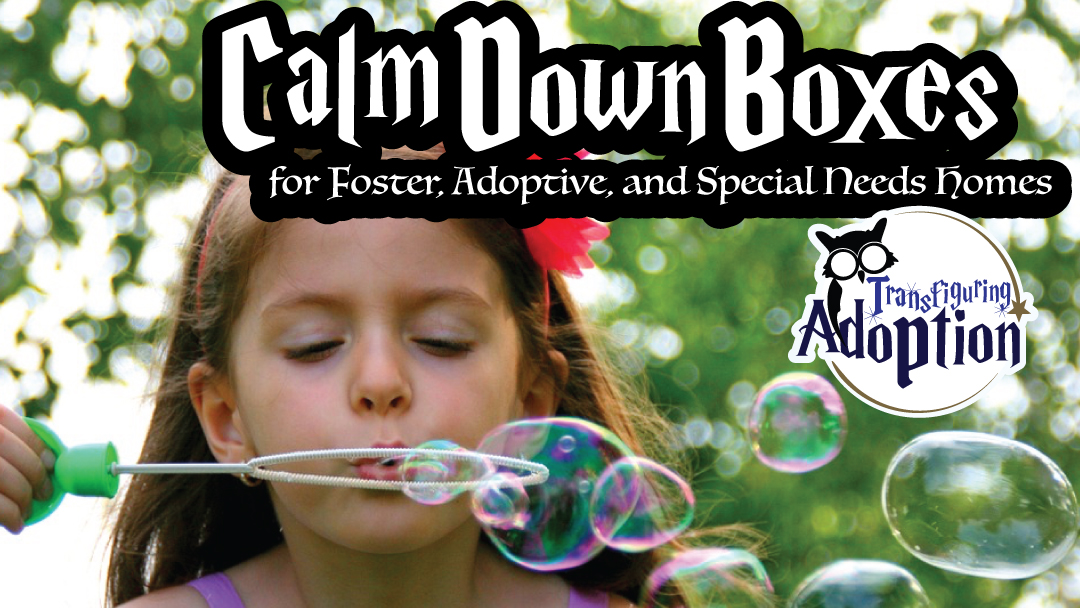
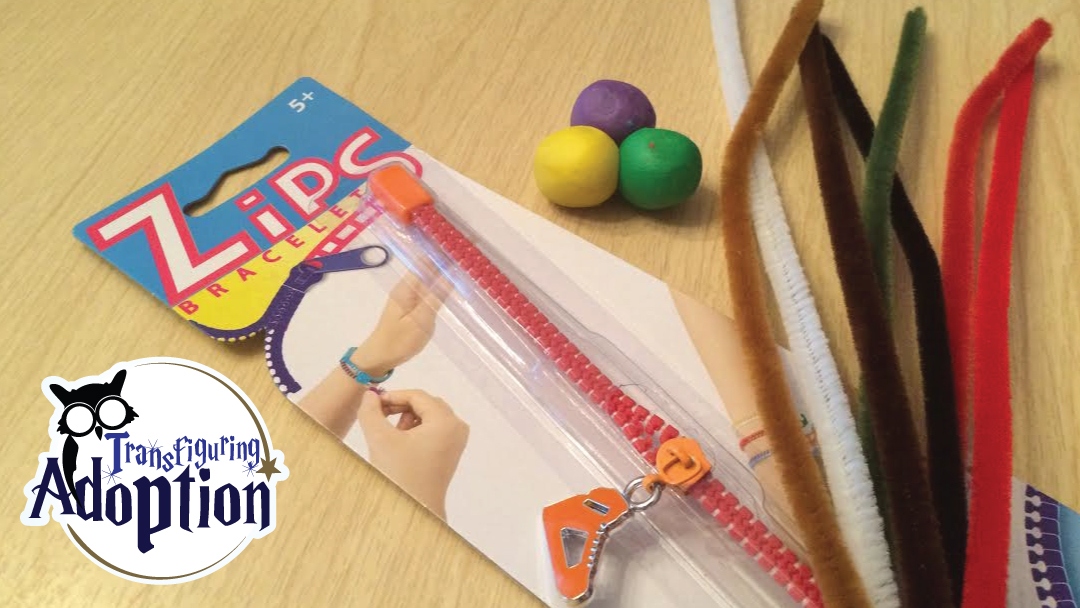
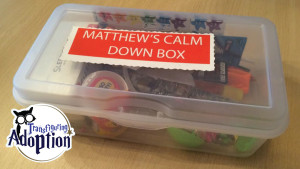
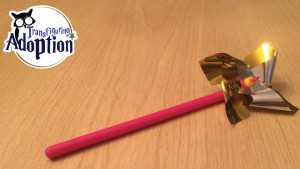
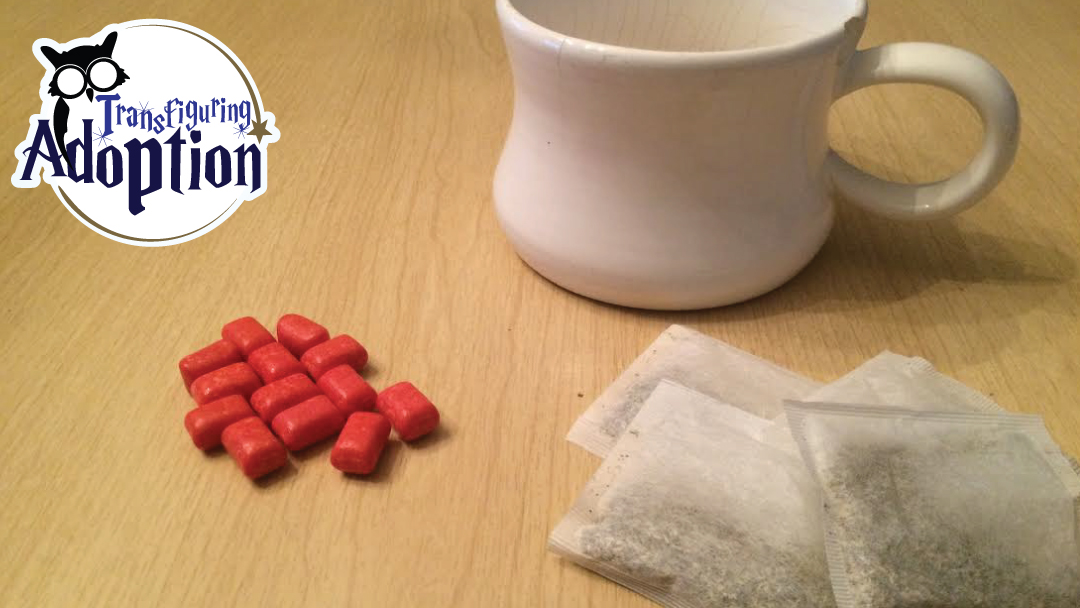
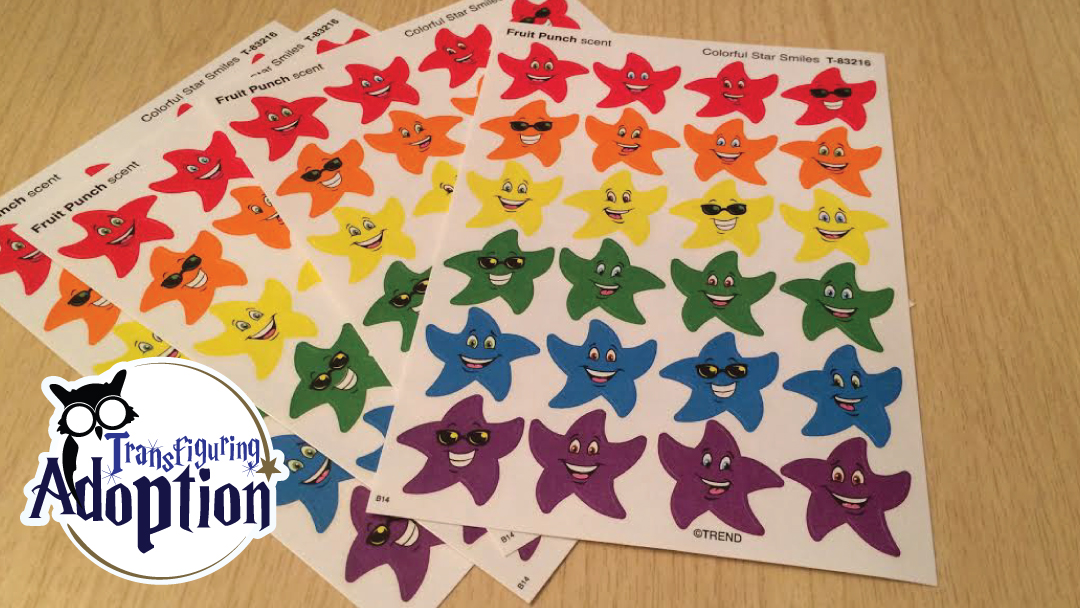
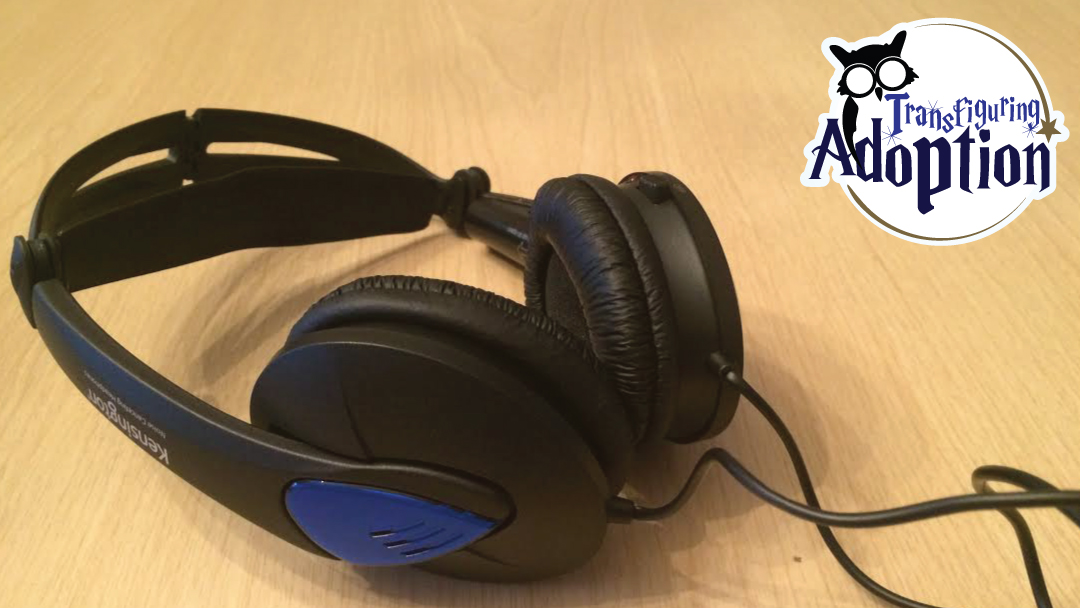
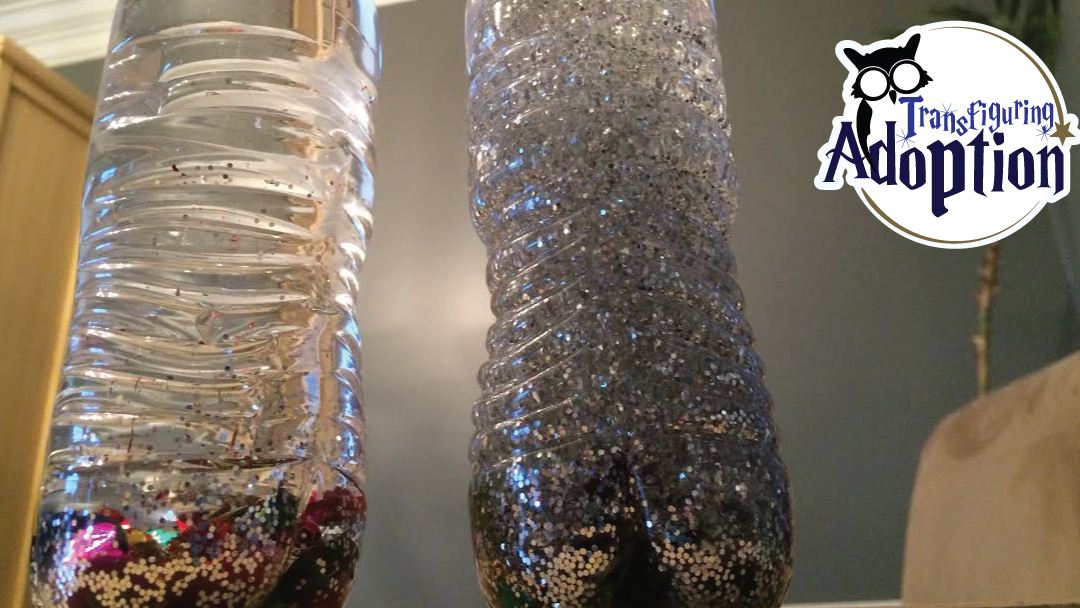
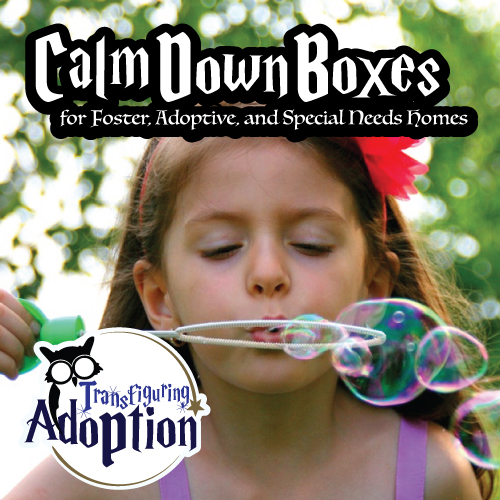
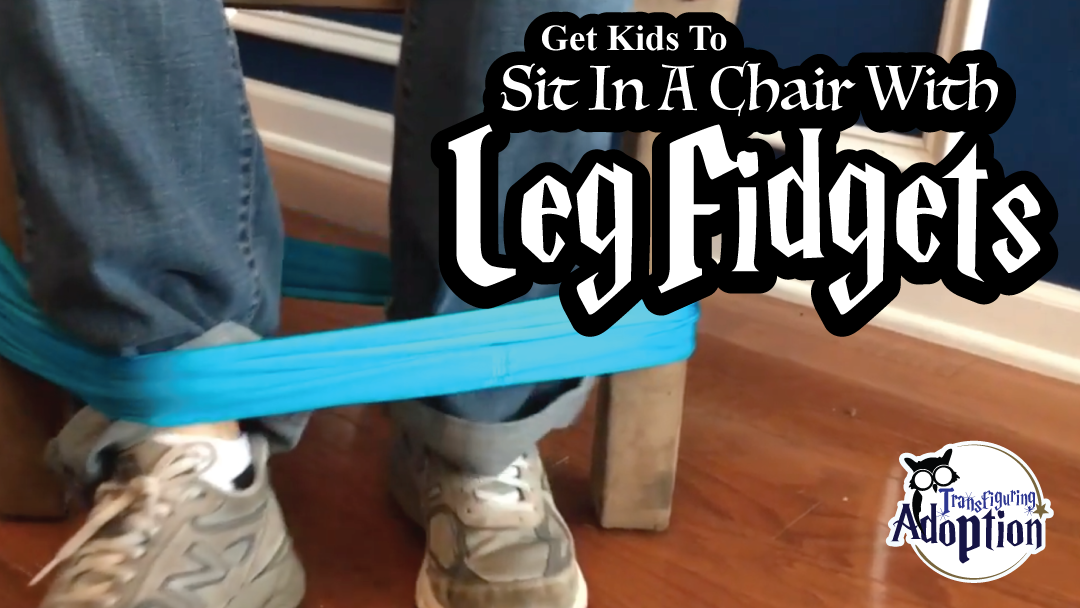
Mama Bear
“Research has shown chewing gum reduces stress (lowering the stress hormone cortisol) and anxiety, helps concentration, and improves mood.” That explains why Buddy loves chewing gum (and why I have a stash of gum in my office desk).
Margie Fink
🙂 Things make so much sense with a little science explaining them. It’s funny…the more I learn about sensory processing and about sensory “issues,” the more I can see my own sensory issues, likes, dislikes, and strategies and those of our family.